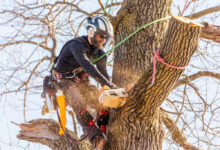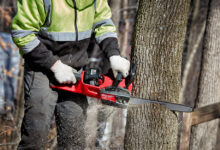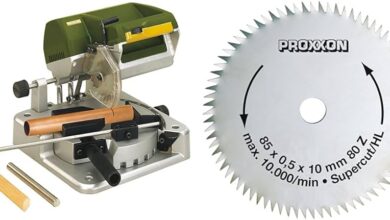Operating a chainsaw requires a delicate balance between power and precision. A firm grip on the chainsaw’s handles is essential for maintaining control and ensuring safety during operation. Chainsaw handles are designed with ergonomic features to enhance comfort and reduce fatigue, but proper grip techniques are crucial for maximizing safety and efficiency.
This comprehensive guide provides expert insights into the various grip styles for chainsaws, highlighting their strengths and weaknesses. We will also delve into the importance of proper grip placement and discuss the potential risks associated with improper grip techniques. Whether you are a seasoned professional or a novice user, this article aims to empower you with the knowledge and skills necessary to operate a chainsaw safely and effectively.
Contents
Introduction
Chainsaws are versatile power tools used for a wide range of tasks, from felling trees to trimming branches. Their powerful engines and sharp cutting chains require careful handling to prevent accidents. The chainsaw’s handles play a pivotal role in maintaining control over the tool, and the grip you use can significantly impact your safety and comfort.
Proper grip techniques not only enhance precision and control but also reduce the risk of injury. A secure grip prevents the chainsaw from slipping out of your hands, minimizing the likelihood of accidents. Additionally, a comfortable grip reduces fatigue and strain, allowing you to work longer without experiencing discomfort.
Understanding the different grip styles and their applications is essential for safe and efficient chainsaw operation. In this article, we will explore the various grip techniques, their advantages and disadvantages, and provide detailed instructions on how to execute each grip properly.
Grip Styles for Chainsaws
There are three main grip styles for chainsaws: the standard grip, the modified grip, and the wrap-around grip. Each grip style offers unique advantages and drawbacks, and the choice of grip depends on the specific task and the user’s preferences.
1. Standard Grip
The standard grip is the most basic and widely used grip style for chainsaws. It involves placing your left hand on the front handle and your right hand on the rear handle. Your thumbs should rest on top of the handles, and your fingers should wrap around the handles securely.
The standard grip provides a good balance between control and comfort. It is suitable for most chainsaw tasks, including felling trees, bucking logs, and pruning branches. However, the standard grip can be limiting in certain situations, such as when working in tight spaces or when precise control is required.
2. Modified Grip
The modified grip is a variation of the standard grip that offers enhanced control and precision. It involves placing your left hand slightly forward on the front handle, with your thumb extended along the top of the handle. Your right hand remains on the rear handle in the standard position.
The modified grip provides greater leverage and control over the chainsaw, making it ideal for intricate tasks such as carving or sculpting. It also reduces the risk of kickback by keeping your left hand further away from the cutting chain.
3. Wrap-Around Grip
The wrap-around grip is a specialized grip style that provides maximum control and stability. It involves wrapping your left hand around the front handle and placing your right hand on the rear handle. Your thumbs should be tucked under the handles, and your fingers should wrap around the handles securely.
The wrap-around grip is particularly useful for heavy-duty tasks such as felling large trees or cutting through thick logs. It provides the greatest stability and control, but it can also be fatiguing to maintain for extended periods.
Grip Placement and Positioning
In addition to choosing the appropriate grip style, proper placement of your hands on the handles is crucial for safety and efficiency. The correct grip placement ensures optimal control and minimizes the risk of injury.
Your hands should be positioned shoulder-width apart on the handles, with your elbows slightly bent. Your wrists should be straight and your forearms parallel to the ground. This position provides the greatest leverage and control over the chainsaw.
Avoid gripping the chainsaw too tightly. A death grip can restrict blood flow to your hands, causing fatigue and discomfort. Instead, hold the chainsaw securely but maintain a relaxed grip. Your hands should be able to move freely on the handles to adjust your grip as needed.
Grip Strength and Endurance
Developing adequate grip strength and endurance is essential for safe and effective chainsaw operation. Strong hands provide better control over the chainsaw, reducing the risk of accidents. Endurance is also important, as chainsaw work can be physically demanding.
There are several exercises you can do to improve your grip strength and endurance. Squeezing a rubber ball or using a hand gripper are effective ways to strengthen your hand muscles. You can also increase your endurance by holding a dumbbell or kettlebell in each hand and performing wrist curls or farmer’s carries.
Importance of Gloves
Wearing gloves is an important safety measure when operating a chainsaw. Gloves protect your hands from cuts, abrasions, and blisters. They also provide a better grip on the chainsaw handles, reducing the risk of slippage.
Choose gloves that are made of a durable material such as leather or synthetic leather. The gloves should fit snugly but not too tightly. They should also allow for good dexterity so that you can control the chainsaw effectively.
Common Grip Errors
Understanding common grip errors and how to avoid them is crucial for safe chainsaw operation. Some of the most common grip errors include:
Gripping the chainsaw too tightly: Gripping the chainsaw too tightly can restrict blood flow to your hands, causing fatigue and discomfort. It can also reduce your control over the chainsaw, increasing the risk of accidents.
Positioning your hands too close together: Positioning your hands too close together on the handles can reduce your leverage and control over the chainsaw. It can also increase the risk of kickback.
Not using gloves: Operating a chainsaw without gloves is a safety hazard. Gloves protect your









